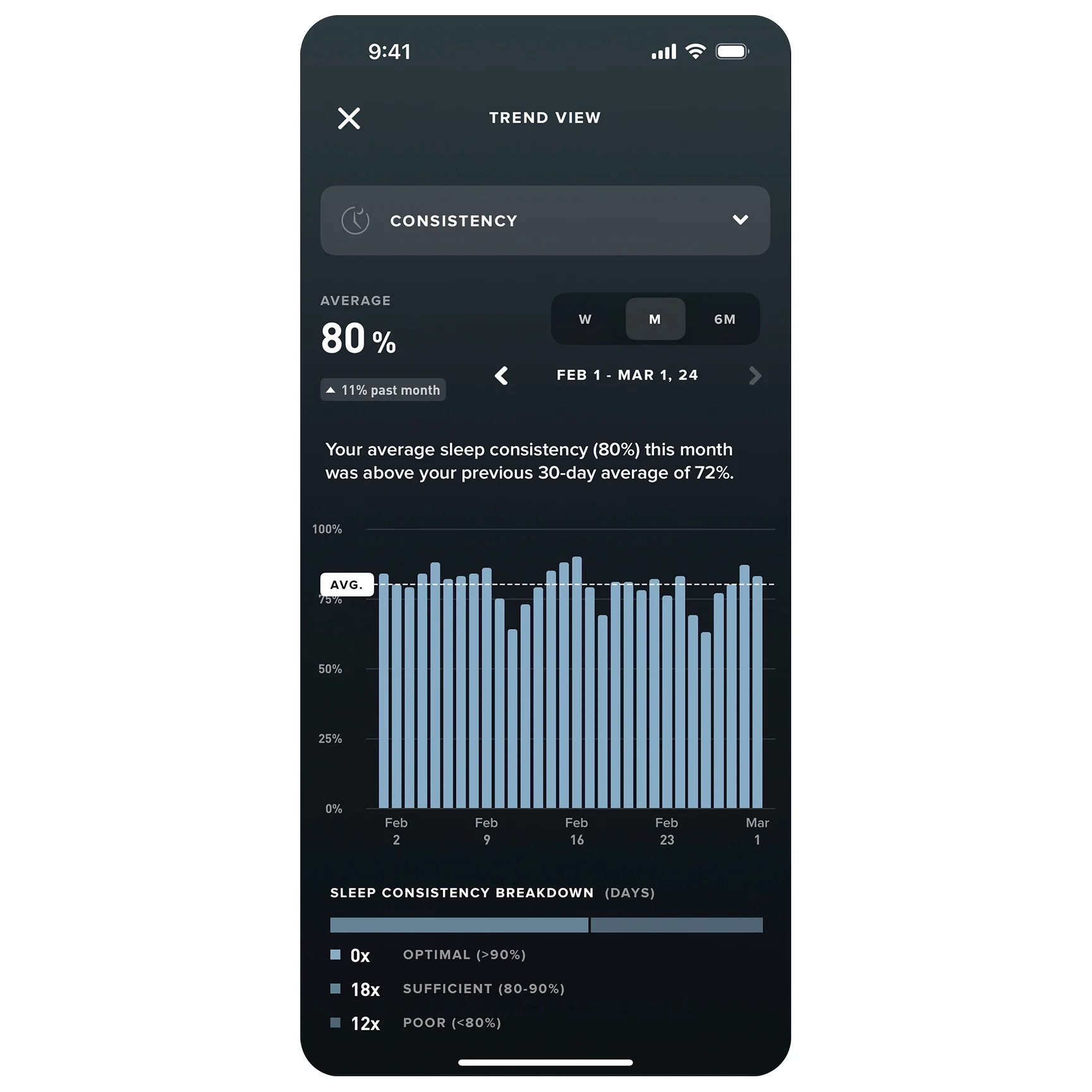Topics
- Article
- Sleep
How to Reset Your Circadian Rhythm and Fix Your Sleep Schedule

We explore how to fix your circadian rhythm and reset your sleep schedule to fall in line with what your body needs to function at its best.
Many of us have trouble falling asleep, feel sleepy when we wake up, and often just aren’t able to sleep when our bodies’ want us to. By resetting your circadian rhythm and following a natural sleep schedule that aligns with your internal body clock, you’ll get better, more efficient sleep and in turn improve your overall health and well being.
Circadian Rhythm Overview
Your circadian rhythm is a 24-hour internal clock which regulates many cycles your body goes through on a daily basis, most significantly when you fall asleep and wake up. It is controlled by a part of your brain called the hypothalamus, which responds to light in the morning and tells your body to begin producing melatonin (that makes you feel tired) as it gets dark in the evening. Circadian rhythms may vary from person to person, and they also change and evolve with age. Babies, children, teenagers, adults and elderly people all have different times that their bodies want to eat, sleep, get up, etc.
What is Circadian Rhythm Sleep Disorder?
According to the National Institute of Health, “circadian rhythm disorders are problems that occur when your sleep-wake cycle is not properly aligned with your environment and interferes with your daily activities.” Sleep-wake cycle disorders can be attributed to any number of factors, including jet lag after crossing time zones, shift work or other occupations with frequently changing hours, specific medical conditions, something as simple as going out late at night and sleeping in in the mornings on weekends, or even Daylight Saving Time. Learn More: Optimal Sleep, Diet & Exercise Tips for Working Night Shift
How to Reset Circadian Rhythm
There’s a very easy fix to resetting your circadian rhythm, or more accurately, discovering what your natural circadian rhythm actually is. The hard part is finding the time to do it: 1. Start by getting up in the morning at a time that seems normal for you. 2. Go to bed that night when you begin to feel tired. 3. The next day, do not use an alarm, just sleep until you wake up naturally. Repeat this process for several days, and soon enough you’ll develop a consistent sleep pattern and discover exactly when your body wants to be sleeping. At this point, your sleep schedule will now fall in line with your circadian rhythm. Learn More: How Light Sleepers Can Get More Sleep
More Tips to Fix Your Sleep Schedule
Once you’ve found your ideal sleep-wake routine you’ll want to do your best to maintain it. At WHOOP, we refer to this as sleep consistency--going to bed and waking up at similar times each day. Our data shows that better sleep consistency leads to more REM and deep sleep (the restorative stages of sleep), increases sleep efficiency, and even improves long-term mental health. Here are 10 tips to help fix your sleep schedule and maintain your circadian rhythm:
- Go outside and get some sunlight in the morning as soon as you can after waking up
- Stay away from bright light exposure 2 hours before going to bed
- Plan consistent times for your meals each day, a scheduled eating pattern reinforces your circadian rhythm
- Don’t eat close to bedtime (within a few hours), your body won’t sleep as well if it’s busy digesting food
- Hydrating properly during the day will help you sleep better at night
- If you take a nap, avoid doing it in the afternoon or napping for too long, both will make it difficult for you to fall asleep at your normal bedtime
- Try not to consume caffeine within 8 hours of when you plan to sleep
- Limit or skip drinking alcohol before bed, it destroys the quality of your sleep
- Make your bedroom an optimal environment for sleep, in particular dark, quiet and cool
- Stick to a regular pre-bed routine that lets your body know it’s time for sleep
Learn More: 28 Techniques to Fall Asleep Fast
Reset & Maintain Your Circadian Rhythm with WHOOP
WHOOP accurately tracks your sleep in detail, including duration of each stage of sleep as well as the time you spend awake in bed not sleeping. The Sleep Planner feature calculates how much sleep you need each night (based on previous sleep and strain your body takes on) and monitors your circadian rhythm in order to make daily recommendations for your ideal bed and wake times.
WHOOP also gives you visibility into the key sleep metrics you need for good sleep. Review weekly, monthly, and 6 month Trends on your sleep consistency, efficiency, debt, and restorative sleep ratio.

WHOOP tracks your sleep consistency to help you better maintain your circadian rhythm.
Additionally, WHOOP provides you with Weekly Performance Assessments that show your sleep consistency and offer actionable insights to follow a healthy sleep schedule in accordance with your circadian rhythm.
Learn More: 12 Sleep Myths Debunked and One That May Be True